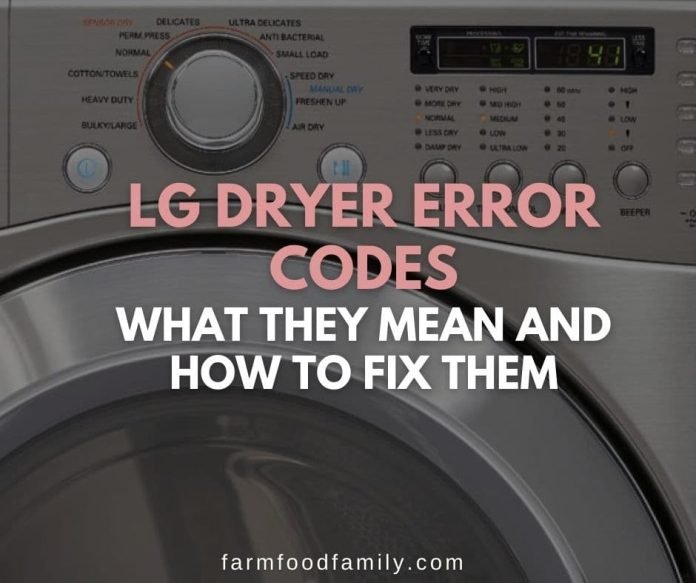
Now, you might be wondering why you should care about this overheating message. Well, continuous use of an overheated dryer can lead to bigger problems, potentially causing damage to the machine or even posing a safety hazard. So, understanding what E2 means and how to deal with it is crucial for the health of your dryer and the safety of your home. Let’s dive deeper into this topic to become more familiar with solving this common household dilemma.
Understanding the E2 Error Code: The Basics
When your LG dryer shows the E2 error code, it’s generally pointing towards an issue with the drying machine’s temperature. Imagine running a car without coolant; it’s bound to overheat. The same principle applies here. The E2 error reflects a problem with the dryer’s temperature sensor, which is a vital component for maintaining the right temperature during drying cycles. This sensor acts like a thermostat, constantly checking the temperature inside the dryer to keep your clothes safe and dry without causing damage or excess heat.
So why does this happen? There might be several reasons. For one, there could be an issue with the lint filter or vent. When these components are blocked or dirty, the dryer can’t expel hot air efficiently, leading to temperature issues. Alternatively, a faulty thermostat or a malfunctioning moisture sensor could also be the culprit. Each of these issues prevents your dryer from functioning optimally, prompting it to flash the E2 code to grab your attention.
Now, knowing where the problem might lie is half the battle won. By addressing these components, one can often resolve the E2 error without the need for professional help. But remember, safety first! Make sure you unplug the dryer before inspecting any internal parts. If you’re a beginner, it might be wise to start with the simpler checks like cleaning the lint filter and ensuring that the vents are clear.
Troubleshooting the E2 Error Code Step by Step
To tackle the E2 error, let’s break down the steps. First, check the lint filter. This is something you can and should do regularly, not only to fix the E2 error but also to improve your dryer’s efficiency and lifespan. A clogged lint filter can lead to overheating because the hot air has nowhere to go. Think of it as trying to breathe through a straw—if it’s blocked, air doesn’t pass through easily.
Next, inspect the dryer vent. Again, a blockage here could be similar to trying to run with a stuffy nose—it’s just not going to work well. Pull the dryer away from the wall and check the duct for any visible obstructions. If you notice build-up or blockages, clearing them can often resolve the overheating issue and get rid of that pesky E2 error code.
If cleaning the lint filter and clearing out the vents don’t solve the problem, the issue might lie with the temperature sensor or thermostat. This might require a professional’s touch unless you’re comfortable and experienced in handling dryer components. Sensors and thermostats play a crucial role in maintaining appropriate temperatures. If they’re faulty, the dryer will continue to flash the E2 code, even after you’ve cleaned the vents and filters.
Preventing Future E2 Errors
Nobody likes dealing with unexpected appliance issues, so preventing the E2 error from happening in the first place would be ideal, right? The good news is that prevention is fairly straightforward. Regular maintenance and cleaning can go a long way in keeping your dryer running smoothly. Just like a car needs regular oil changes, your dryer needs regular lint filter cleaning. Make it a habit to clean the lint filter after every load.
Also, periodically check and clean your dryer vents. This not only helps prevent the E2 error but also reduces the risk of fire hazards, which are often caused by clogged vents. A simple way to remember this is to think of it as spring cleaning for your dryer—only, you get to do it a little more often!
Lastly, pay attention to any unusual sounds or behaviors from your dryer. These might be early warning signs of wear and tear or impending issues. Addressing them early can save you from the hassle of dealing with error codes down the line. Remember, a well-maintained dryer is a happy dryer!
In conclusion, the E2 error code on an LG dryer is not just a random glitch. It’s a signal that your appliance needs a little TLC. By understanding what this code means and following a few simple troubleshooting steps, you can often fix the issue yourself and enjoy hassle-free drying. Happy laundering!